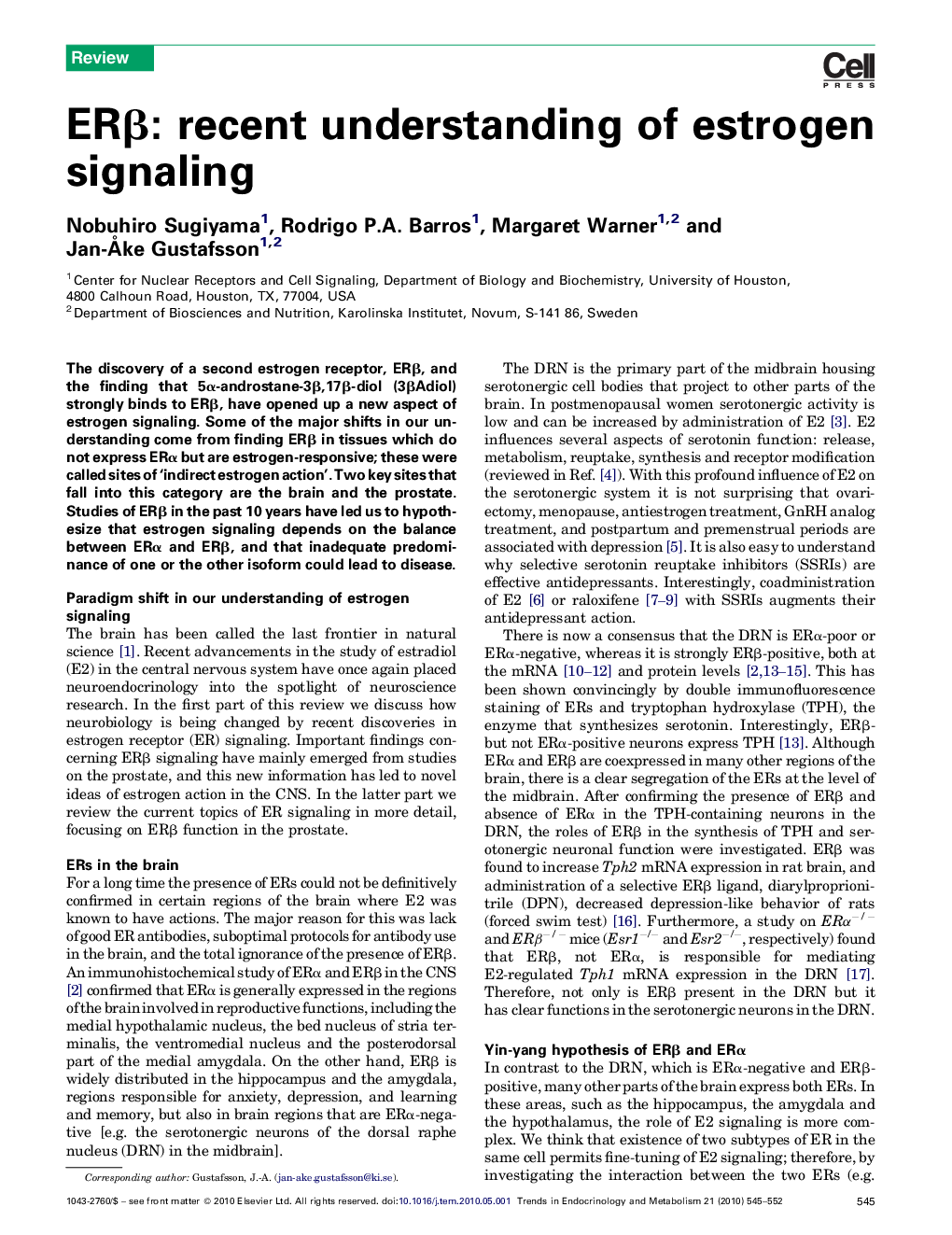| Article ID | Journal | Published Year | Pages | File Type |
|---|---|---|---|---|
| 2811080 | Trends in Endocrinology & Metabolism | 2010 | 8 Pages |
Abstract
The discovery of a second estrogen receptor, ERβ, and the finding that 5α-androstane-3β,17β-diol (3βAdiol) strongly binds to ERβ, have opened up a new aspect of estrogen signaling. Some of the major shifts in our understanding come from finding ERβ in tissues which do not express ERα but are estrogen-responsive; these were called sites of ‘indirect estrogen action’. Two key sites that fall into this category are the brain and the prostate. Studies of ERβ in the past 10 years have led us to hypothesize that estrogen signaling depends on the balance between ERα and ERβ, and that inadequate predominance of one or the other isoform could lead to disease.
Related Topics
Life Sciences
Biochemistry, Genetics and Molecular Biology
Endocrinology
Authors
Nobuhiro Sugiyama, Rodrigo P.A. Barros, Margaret Warner, Jan-Åke Gustafsson,
